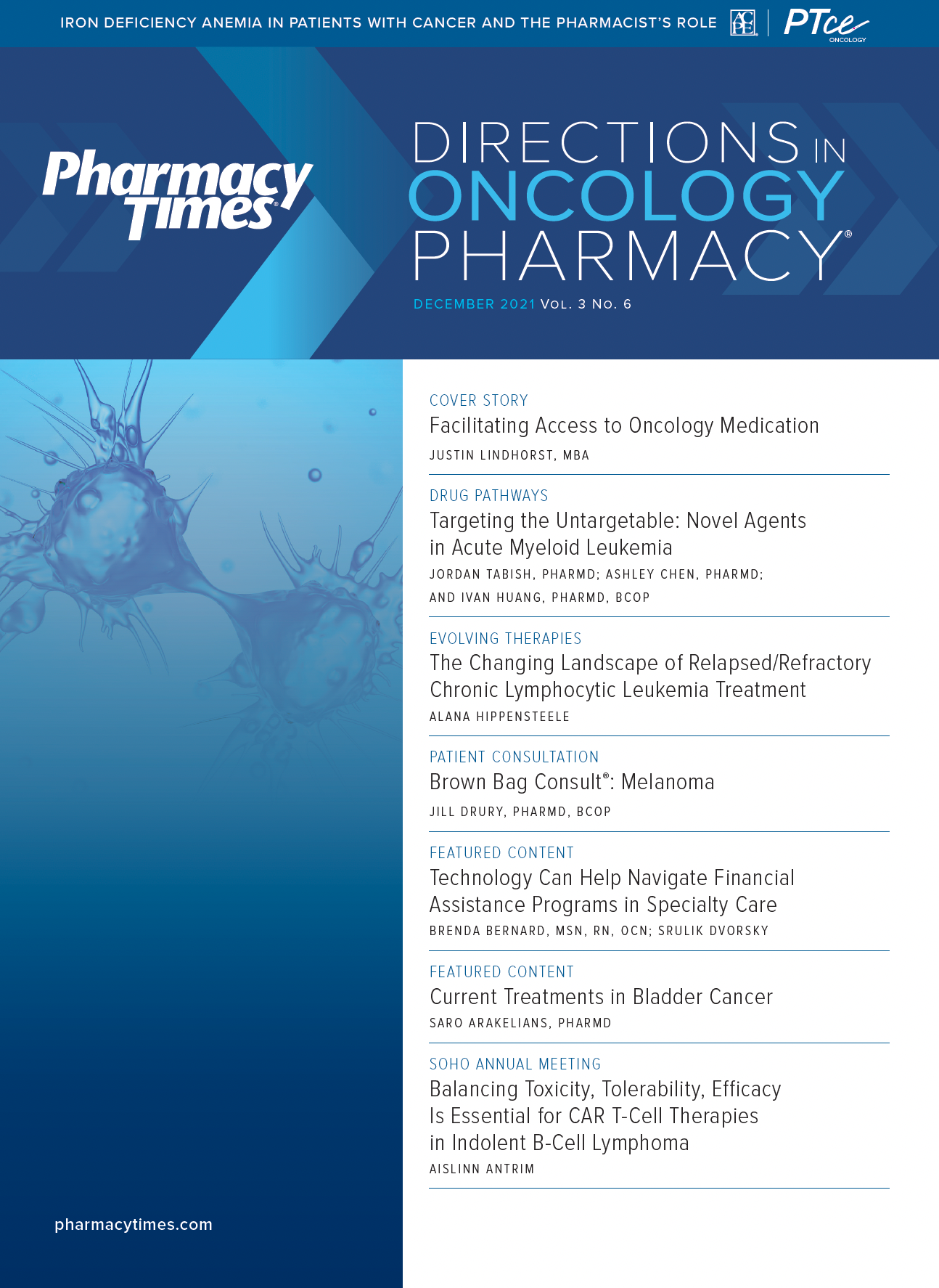Publication
Article
Pharmacy Practice in Focus: Oncology
Expert Panel Reviews Recommended Therapy Options for Hodgkin Lymphoma
Author(s):
Experts reviewed the efficacy and safety of the recommended treatment regimens and discussed which treatment strategy they would recommend for their patients.
During a panel discussion on treatment approaches in the management of Hodgkin lymphoma for Pharmacy Times, experts reviewed the efficacy and safety of the recommended treatment regimens and discussed which treatment strategy they would recommend for their patients.
During the discussion, the panelists addressed the results of the RATHL trial (NCT00678327), which found that giving patients a PET scan following 2 cycles of chemotherapy with doxorubicin, bleomycin, vinblastine, and dacarbazine (ABVD) could determine whether bleomycin—part of the ABVD regimen known to cause long-term lung damage—can be removed from the regimen of patients who are responding well to treatment.
According to the study results, removing bleomycin and continuing with doxorubicin, vinblastine, and dacarbazine (AVD) for these patients is equally effective and safer than ABVD.1
“Clearly everyone knows bleomycin can cause lung toxicity—it’s unpredictable,” said Andrew Whiteley, MD, of Texas Oncology. “It could be a young healthy person in that bimodal distribution of Hodgkin lymphoma, where you’re treating a 20- to 30-year-old, and they’re not a smoker—they’ve got healthy lungs— and all of a sudden they’ve got a cough, fever, and then they’re in the ICU. And a small percentage of people— thankfully a small percentage of people—actually die of bleomycin-induced lung toxicity.”
The panel also discussed the results of the ECHELON-1 trial (NCT01712490), an open-label, multicenter, randomized phase 3 trial involving patients with previously untreated stage III or IV classic Hodgkin lymphoma. The study investigators found that using brentuximab vedotin (Adcetris; Seagen) in combination with AVD therapy had superior efficacy to ABVD in the treatment of patients with advanced-stage Hodgkin lymphoma.2 According to Whiteley, the updated 5-year results of the study make an even stronger case for removing bleomycin from the treatment regimen for Hodgkin lymphoma.
“The way I look at it, if I have a patient in front of me, unless they have a contraindication to Adcetris—which would basically be some sort of severe neuropathy to start out with—then I personally favor Adcetris AVD over ABVD because there’s a randomized, phase 3, large trial that showed a benefit—and a potentially increasing benefit at 5 years compared to the 2 year,” Whiteley said.
Whiteley also discussed the bleomycin, etoposide, doxorubicin, cyclophosphamide, vincristine, procarbazine, and prednisone (BEACOPP) treatment regimen. According to Whiteley, while BEACOPP is more effective, it is also considerably more toxic.
“The reason why, in America, we don’t use BEACOPP—even before the Adcetris ECHELON-1 data came out—is because of the amount of toxicity, the level of infertility, and the secondary malignancies in particular,” Whiteley said.
During the discussion, Ryan Haumschild, PharmD, MS, MBA, director of pharmacy services at Emory Healthcare, agreed with Whiteley’s assessment of BEACOPP as a therapy to avoid for the majority of patients.
“We’re starting to adapt more to assessing quality of life and patient-reported outcomes, and looking at the treatment of a patient more holistically and not just at clinical data,” Haumschild said. “Because if the patient can’t sustain treatment, what good is it having the best therapy if they’re not going to be able to handle it?”
REFERENCES
- RATHL trial: reducing serious side effects and improving outcomes.
Lymphoma Action. Accessed November 23, 2021. https://lymphoma-action.org.uk/ rathl-trial-reducing-serious-side-effects-and-improving-outcomes - Connors JM, Jurczak W, Straus DJ, et al. Brentuximab vedotin with chemotherapy for stage III or IV Hodgkin’s lymphoma. N Engl J Med. 2018;378(4):331-344. doi:10.1056/NEJMoa1708984







